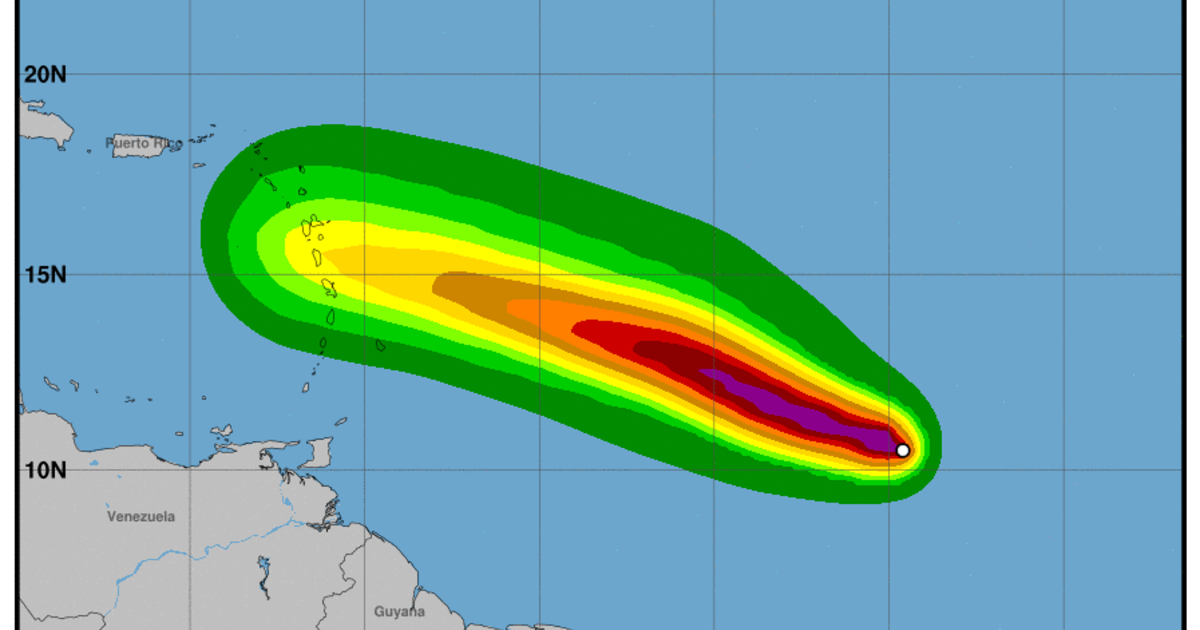Beryl’s Projected Path and Potential Impacts

Beryl projected path – Tropical Storm Beryl is currently located in the Atlantic Ocean, approximately 1,000 miles east of the Lesser Antilles. It is moving west-northwest at 15 miles per hour and is expected to strengthen into a hurricane by late Sunday.
Beryl’s projected path takes it over the Lesser Antilles on Monday, near Puerto Rico on Tuesday, and then towards the Bahamas by Wednesday. The storm is expected to make landfall in Florida by the end of the week.
Beryl’s projected path remains uncertain, but the latest spaghetti models offer some insight into its potential track. For the most up-to-date information on Tropical Storm Beryl, visit tropical storm beryl spaghetti models. The models show a wide range of possible paths, so it’s important to stay informed and prepared for any changes.
Potential Impacts
Beryl is expected to bring heavy rainfall, strong winds, and storm surge to the affected areas. Flooding is a major concern, especially in low-lying areas. The storm surge could reach up to 6 feet in some areas, causing significant damage to coastal communities.
Beryl projected path indicates a gradual turn towards the northwest over the next few days. For the latest updates on Beryl’s track and intensity, refer to nhc beryl. The storm is expected to weaken as it moves over cooler waters, but it’s important to stay informed and follow official advisories for the most accurate information on Beryl’s projected path.
The strong winds associated with Beryl could also cause significant damage to buildings, trees, and power lines. Residents in the affected areas should be prepared for power outages and other disruptions.
Preparations
Local authorities and emergency responders are taking steps to prepare for Beryl’s impact. Evacuations have been ordered in some areas, and shelters have been opened for those who need them. Residents are urged to follow the instructions of local officials and to take precautions to protect themselves and their property.
Historical Context and Comparison to Past Hurricanes

Beryl’s projected path warrants comparison to past hurricanes in the region to gain insights into its potential impacts and inform preparedness measures. By examining historical hurricane tracks and characteristics, we can identify similarities and differences, helping us anticipate Beryl’s behavior and potential consequences.
Past Hurricanes with Similar Characteristics
Historical hurricanes that share characteristics with Beryl, such as formation location, intensity, and projected path, can provide valuable lessons. These past hurricanes offer insights into the potential impacts and vulnerabilities associated with Beryl.
- Hurricane Floyd (1999): A Category 4 hurricane that made landfall in North Carolina, bringing heavy rainfall and widespread flooding. Floyd’s track and intensity are comparable to Beryl’s projected path, making it a relevant reference for assessing potential impacts.
- Hurricane Matthew (2016): A powerful Category 5 hurricane that devastated Haiti and the southeastern United States. Matthew’s track and intensity are also similar to Beryl’s projected path, providing insights into the potential for coastal erosion, storm surge, and flooding.
Potential Similarities and Differences
By comparing Beryl’s projected path to past hurricanes, we can identify potential similarities and differences that may influence its impacts. These comparisons help refine preparedness strategies and identify areas of concern.
- Intensity: Beryl’s projected intensity is similar to past hurricanes that have caused significant damage. This indicates a potential for high winds, storm surge, and flooding.
- Landfall Location: The projected landfall location of Beryl is an important factor in determining its potential impacts. Past hurricanes that made landfall in similar areas can provide insights into the vulnerabilities and risks associated with Beryl’s path.
- Speed and Direction: The speed and direction of Beryl’s movement can influence the duration and severity of its impacts. Comparing Beryl’s projected path to past hurricanes can help anticipate the potential for prolonged rainfall, flooding, and wind damage.
Risk Assessment and Evacuation Planning: Beryl Projected Path

Tropical Storm Beryl poses a significant risk to coastal communities and inland areas along its projected path. It is crucial to assess the potential impacts and develop comprehensive evacuation plans to ensure the safety of residents.
Coastal communities are particularly vulnerable to storm surge, high winds, and flooding. Inland areas may experience heavy rainfall, flash flooding, and landslides. It is essential to stay informed about the storm’s progress and heed evacuation orders issued by local authorities.
Evacuation Plans
Evacuation plans should include the following:
- Identification of safe evacuation routes and shelters
- Establishment of a family communication plan
- Preparation of an emergency kit with essential supplies
It is important to familiarize yourself with the evacuation routes and shelters in your area. Discuss the evacuation plan with your family and identify a designated meeting place in case of separation.
Heeding Evacuation Orders, Beryl projected path
Evacuation orders are issued by local authorities to ensure the safety of residents. It is crucial to heed these orders promptly and evacuate to designated shelters or safe zones.
Ignoring evacuation orders puts you and your family at unnecessary risk. Stay informed about the storm’s progress and follow the instructions of local officials.